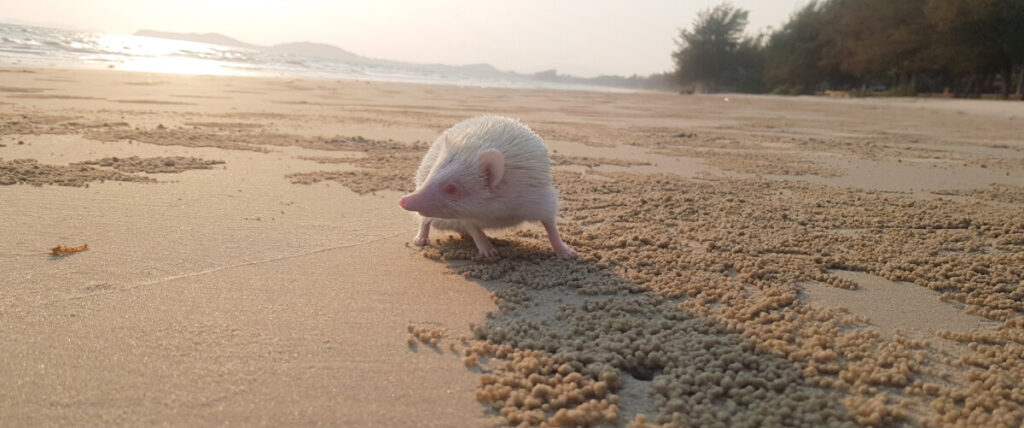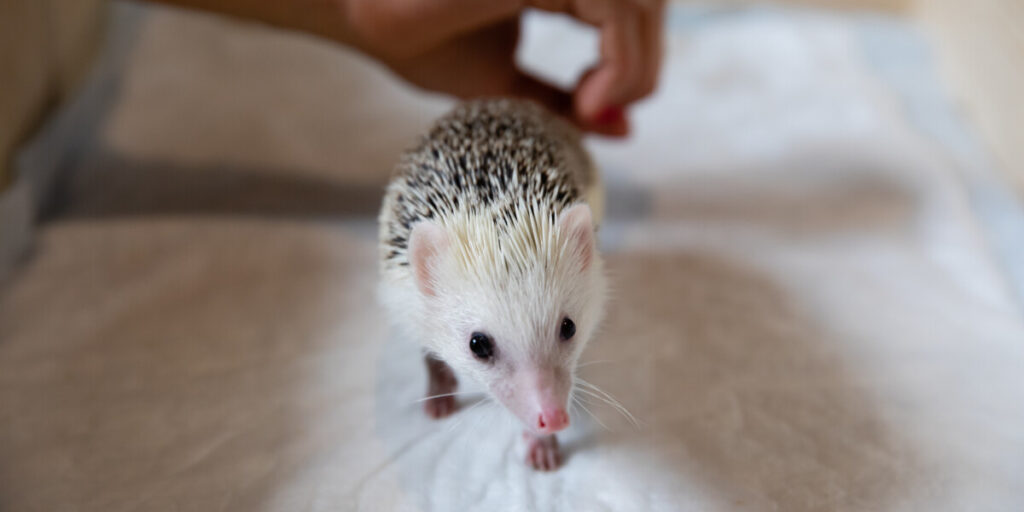One of the most incredible things about having a pet hedgehog is being confident in caring for it. Bathing is surprisingly a big deal in hedgehog care, and the question is often raised: are dust and sand baths good for hedgehogs? We are here to give you helpful information on what’s best for your hedgehog in this area.
Wild hedgehogs make use of sand baths in a similar way to other wild animals. The purpose is to clean themselves and maintain their skin’s natural oils. However, dust within purchased sand can cause infection and injury for hedgehogs. Owners should be mindful of the sand they provide for a sand bath.
There are so many fun ways to bathe your hedgehog, and all of them are good for different reasons. Regular baths, foot baths, and sand baths all have their place in the hedgehog grooming schedule, but we are here to answer the question about dust and sand baths. Snuggle up and get ready to learn all there is to know about dust and sand baths for your hedgehog.
Table of Contents
Can Hedgehogs Take Sand Baths?

In the wild, hedgehogs naturally take sand baths. A benefit of taking a sand bath instead of a water one is that while it does get the dirt off, it does not strip the skin of its oils. Hedgehogs are prone to dry skin, so they must maintain the oil on their skins.
So, yes, hedgehogs can take sand baths. While you should only give your hedgehog a regular water bath about once a month, you can let your hedgehog enjoy a good sand bath as often as you like.
It is essential to know that not all sand is made equal. Suppose you are purchasing sand for your hedgehog to use. In that case, it must be free of chemicals and other harmful materials. Let’s look at what sand is safe to use.
Which Sand Is Safe for Hedgehogs?
There is a fair amount of debate and concern over what sand is safe for hedgehogs to use in a sand bath. Remember a few key aspects when sourcing yours and preparing it for your sweet pet.
One crucial aspect to consider is the size of the sand particles. Some recommend using chinchilla sand for a hedgehog sand bath; however, chinchilla sand often contains tiny particles. These small particles can be hazardous to your hedgehog. They can enter the airways and even cause urinary tract infections. For that reason, chinchilla sand or dust is not the best option for a hedgehog sand bath.
A good fit could be playground sand. The grains are large enough to stay out of your hedgehog’s nose, mouth, and genitals, which makes it safer.
Whenever you purchase sand for your hedgehog, be sure to bake it. It will ensure that it is clean of any harmful bacteria. Place your sand on a baking pan and bake it at 300 degrees Fahrenheit for about 45 minutes. Only let your hedgehog use it once completely cool.
How Often Can Your Hedgehog Take a Sand Bath?

While water baths should only be resorted to once a month for hedgehogs, sand baths can be given as often or infrequently as you like.
Supervising your hedgehog while taking a sand bath is recommended, as some hedgehogs can sometimes try to ingest sand, which can lead to digestive issues. Also, supervising bath time will allow you to look at your hog’s body afterward to ensure that there isn’t any sand stuck.
Sand baths result in a bit of mess, so keep that in mind when deciding where and how often to provide one for your hedgehog. One way to reduce the mess is to give them a sandbox. A sandbox can help to contain the mess and make it easier to clean up. It is also an excellent way to offer your hedgehog enrichment, as it will enjoy digging and burrowing in the sand. If you have a playpen, that is a good place to put the sandbox, as it will help to keep the sand contained.
In addition, the sand should be replaced regularly to prevent it from getting too dirty.
Do Hedgehogs Need to Take Sand Baths?
In the wild, hedgehogs stay away from large bodies of water. Their only form of bathing is with sand. Hedgehogs in captivity rely on their owners to keep them clean so the methods may vary. Since many hedgehogs are not given sand baths and survive, it is safe to say that they don’t need to take sand baths.
Since sand baths are their natural method of keeping clean, owners who choose to only use water baths should consider skin sensitivities and products that could cause dry, flaky skin. While bathing your hedgehog with water, do not use shampoos that will remove the oil from its skin. You can use a drop of oatmeal baby wash in the water and a soft brush to clean the quills.
Can Hedgehogs Take Dust Baths?

The terms “sand bath” and “dust bath” are interchangeable for many people. For clarity, we have separated the terms here to explain what is acceptable for hedgehogs and what is considered unsafe.
While it is perfectly healthy for hedgehogs to enjoy sand baths, dust baths are dangerous. Chinchilla dust, for example, is too fine to be used for a hedgehog bath. When shopping for sand to use for your hedgehog, check for the particle size and whether there is dust in the mix. Steer clear of dust, and your hedgehog will enjoy a healthy sand bath, free of danger.
Why Can’t Hedgehogs Take Dust Baths?
The most crucial difference between dust and sand is the particle size. While sand is coarser and larger, dust particles tend to be very small.
When a hedgehog has a sand bath, it rolls around in the sand kicking it up, curling in it, and covering its body. With all this movement, coarse sand acts as a cleaning agent, rubbing off dirt and keeping the all-important oils on the skin.
When dust is used, the very fine particles can enter the hedgehog’s tiny nose and mouth, getting stuck in their airways. Dust also contributes to urinary tract infections for hedgehogs, which can be excruciating and difficult to treat.
To Remember
While dust is not safe for hedgehogs, treated sand is excellent for a sand bath. Supervised sand baths are suitable for hedgehogs because they clean the dirt while maintaining the oils.
Consider using playground sand and baking it before using it.

